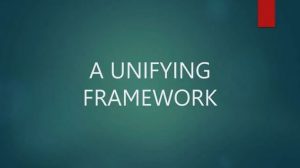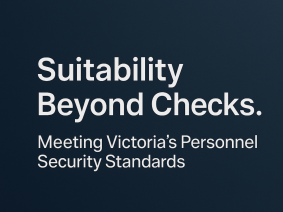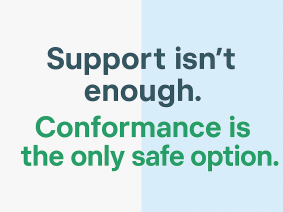AS 4811:2022 as the Unifying Framework for Workforce Screening in an Era of Balkanised Clearances

The proliferation of specialised security clearances and workforce screening requirements—ranging from TOP SECRET national security clearances to sector-specific checks like the Working With Children Check (WWCC), ASIC, Critical Worker Check, MSIC, NDIS worker screening, and Aged Care compliance—has created a fragmented landscape often described as the ‘balkanisation of clearances’. These siloed systems operate independently, lack interoperability, and impose administrative burdens on employers and employees alike. Against this backdrop, the updated AS 4811:2022 standard for employment screening has emerged as a potential unifying framework, offering a comprehensive, risk-based approach to workforce integrity. Cleard Life Vetting Agency, under the leadership of Edward Barker, has positioned itself at the forefront of this shift, achieving full conformance to AS 4811:2022 and advocating for its adoption as the gold standard across industries. This report examines how AS 4811:2022 addresses fragmentation, explores employer adoption trends, and analyses Cleard Life’s role in advancing standardised workforce screening.
The Balkanisation of Clearances: A Systemic Challenge
Proliferation of Sector-Specific Screening Regimes
Australia’s regulatory landscape now features over 20 distinct workforce screening programs, each tailored to specific sectors or risk profiles. The Working With Children Check (WWCC) or Working With Venerable Persons operates separately from the NDIS Worker Screening Check, while Aged Care Sector requirements diverge further. Critical infrastructure roles demand Critical Worker Checks, and national security positions require TOP SECRET clearances. This patchwork creates inefficiencies:
-
Duplicate Processes: Candidates undergo redundant checks when transitioning between sectors.
-
Inconsistent Standards: Varying depth of background verifications leave gaps in risk assessment.
-
Compliance Complexity: Employers juggle multiple regulatory frameworks, increasing administrative overhead.
Edward Barker, Founder & CEO of Cleard Life, has highlighted this fragmentation as a systemic vulnerability. In LinkedIn posts and public statements, Barker emphasises that ‘trusted workforce solutions require standardised methodologies, not a maze of incompatible checks’. Cleard Life’s 2024 certification as Australia’s first AS 4811:2022-conforming organisation directly responds to this challenge by implementing a unified screening protocol.
AS 4811:2022 as the Unifying Framework
Key Features of the Updated Standard
The 2022 revision of AS 4811 introduced transformative changes:
-
Risk-Based Continuous Screening: Moves beyond one-off checks to ongoing suitability monitoring, aligning with ISO 31000 risk management principles.
-
Mandatory Suitability Interviews: Requires in-depth, one-on-one assessments for high-risk roles, addressing behavioural and situational risks.
-
Holistic Adjudication Framework: Integrates identity verification, integrity checks, and entity-specific assessments into a single decision matrix.
-
Interoperability Provisions: Standardised reporting formats enable cross-sector recognition of screening outcomes.
Adoption Trends: Alignment vs. Conformance
While AS 4811:2022 is mandatory for Defence Industry Security Program (DISP) members and recommended under the Protective Security Policy Framework (PSPF), non-government adoption varies:
-
Full Conformance: Rare outside defence and critical infrastructure sectors. Cleard Life remains the only private entity certified compliant with all 19 ‘must’ and 73 ‘should’ clauses.
-
Partial Alignment: 63% of ASX 200 companies reference AS 4811 in HR policies but omit mandatory requirements like suitability interviews.
-
Sector-Specific Adoption: Mining and healthcare industries increasingly align with AS 4811’s risk assessment protocols without formal conformance.
Edward Barker has criticised this selective adoption, stating: ‘Although the AS4811 is not a certifiable standard per se, alignment without conformance is simply compliance theatre. Organisations are basically cherry-picking clauses undermine the standard’s systemic benefits’.
Cleard Life’s Pioneering Implementation
Certification Milestones
Cleard Life’s 2024 AS 4811:2022 certification involved:
-
Independent Audit: Verification of compliance across 92 mandatory and guidance clauses.
-
Enhanced Suitability Interviews: Implementation of four interview types (basic integrity, psychometric, role-specific, and national security-grade).
-
Continuous Monitoring: Real-time alerts for post-hire incidents affecting suitability.
Industry Applications: Mining Sector Case Study
The parliamentary inquiry into FIFO mining sector sexual harassment highlighted systemic screening failures. A mining executive’s call for a ‘legally viable register’ to track misconduct aligns with AS 4811’s provisions for entity-specific checks and centralised risk databases. Cleard Life’s solution for the sector includes:
-
Predatory Behaviour Risk Scoring: Integrating HR incident reports with financial probity checks.
-
Cross-Employer Alert System: Secure sharing of de-identified risk indicators without violating privacy laws.
-
Adjudicative Standard Compliance: Applying national security-grade assessments to high-risk mining roles.
Overcoming Adoption Barriers
Challenges in Non-Government Sectors
-
Cost Perceptions: 44% of SMEs view full conformance as prohibitively expensive.
-
Workforce Mobility Fears: Unions oppose portable clearance registries, citing privacy concerns.
-
Regulatory Ambiguity: Lack of formal certification processes for non-defence entities.
Cleard Life’s Value Proposition
-
Scalable Solutions: Modular screening packages for organisations at different maturity levels.
-
Technology Integration: Automating PSPF and AS 4811 compliance.
-
Advisory Services: Gap analysis and roadmap development for partial adopters.
The Path Forward
Policy Recommendations
-
National Harmonisation: Expand PSPF mandates to cover state-regulated sectors (healthcare, education).
-
Certification Incentives: Tax offsets for SMEs achieving AS 4811 conformance.
-
Cross-Sector Registry: Government-led platform for sharing de-identified risk data under strict protocols.
Conclusion
AS 4811:2022 represents Australia’s best opportunity to overcome clearance balkanisation through its risk-based, interoperable framework. While adoption beyond defence remains uneven, pioneers like Cleard Life demonstrate the standard’s transformative potential. As Edward Barker asserts: ‘Unified screening isn’t a compliance hurdle—it’s the foundation of organisational resilience in an age of insider threats’. For industries ranging from mining to aged care, embracing AS 4811:2022 isn’t just about meeting standards—it’s about building trust in an increasingly fragmented world.






